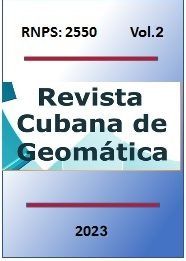Need for rigorous coordinate transformation during large-scale topographic mapping
Main Article Content
Abstract
When combining the results of surveys developed using the Global Navigation Satellite Systems with the geodetic networks initial data, built by traditional methods, inconsistencies arise due to the difference of the reference frames adopted and the relative precision of both. To refer coordinates, obtained by spatial positioning with those of national geodetic networks, it is recommended to determine the most probable values that relate the datum of the former, with the World Geodetic System of the year 1984.
In Cuba, the transformation parameters were obtained from a measurement campaign, carried out in 1998. Since then, these values are used for coordinate transformation in different projects.
With the beginning of the works for the large scale (1:500) topographic updating using drones, it was evident that the parameters defined in 1998 did not guarantee the precision of the coordinates and heights of the photo control points. The solution to this problem lies in the determination of local transformation parameters, which allow considering the local distortions of the geodetic control.
This paper analyzes the need to calculate local parameters, instead of using national 1998 parameters, based on experiences in determining photo control points, during the work of 1:500 scale updating cartography, using the spatial technology for field measurements, as well as drones for aerial surveys.
Article Details

This work is licensed under a Creative Commons Attribution-NonCommercial 4.0 International License.


